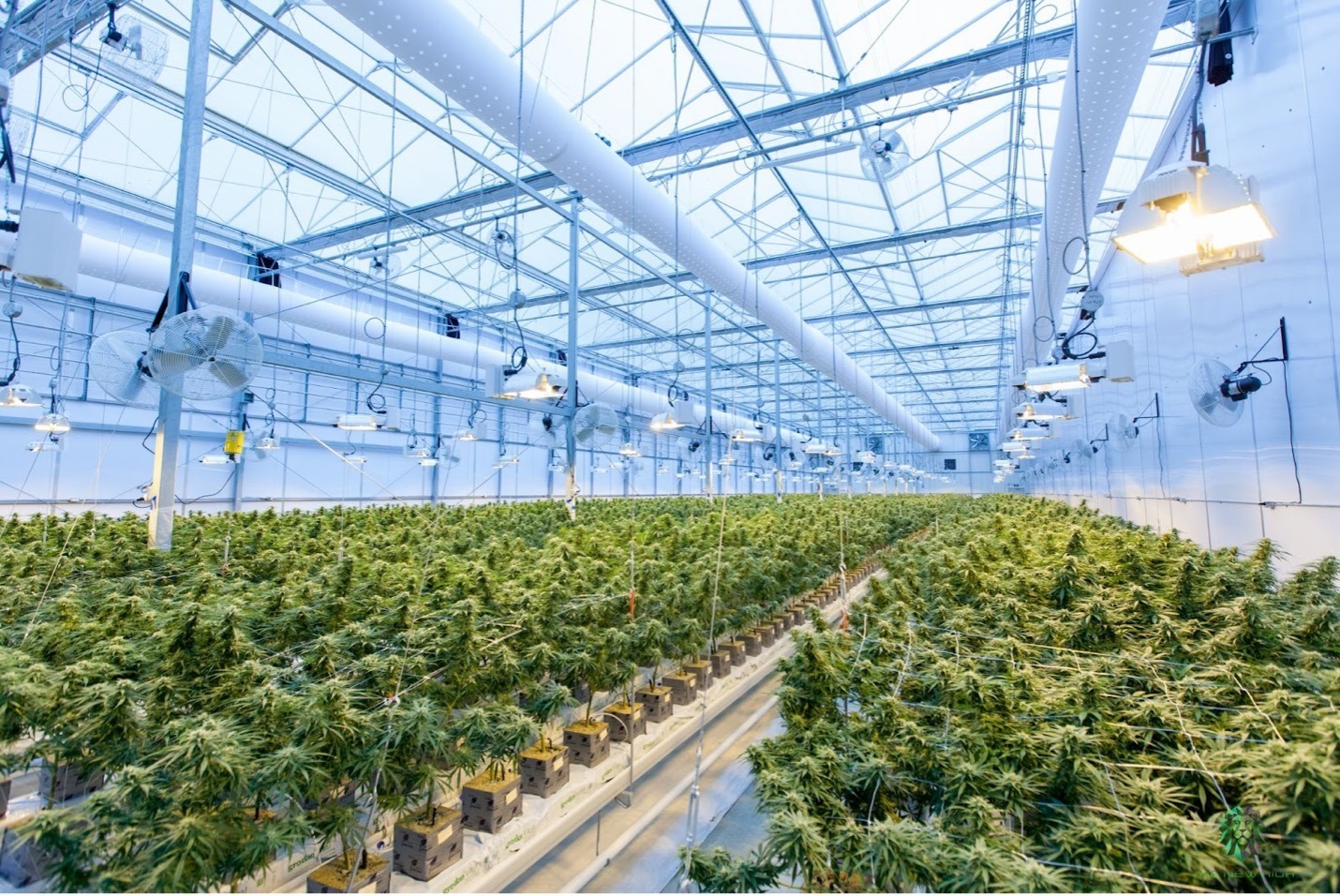Table of Contents [show]
[ez-toc]Cannabis cultivation is an art and a science that has been around for centuries. However, the legalization of cannabis in many countries has led to a surge in demand for high-quality cannabis, resulting in increased investment in cultivation techniques and technologies.
In recent years, these advancements in cannabis cultivation techniques and technologies have revolutionized the industry, leading to more potent strains, higher yields, and improved sustainability.
From genetics to automation, the cannabis industry is constantly evolving, and it’s an exciting time to be involved in this rapidly growing field.
So, let’s look at some of the most exciting developments in cannabis cultivation and what they mean for growers and consumers.
-
LED Lights
One of the most significant developments in cannabis cultivation in recent years has been the widespread adoption of LED lighting.
LED lights have several advantages over traditional high-pressure sodium (HPS) lamps, previously the industry standard. These lights are much more energy-efficient and produce less heat.
Moreover, you can customize it to emit light in specific spectrums that are most beneficial for cannabis growth.
LED lights are also beneficial for growers who want to control the size and shape of their plants. Because LED lights emit less heat, growers can place them closer to the plants without burning them, producing more compact plants with higher yields.
-
Cultivation Facility Security
Cultivation facility security has become a significant concern for growers in recent years as the value of cannabis crops continues to increase.
Growers must protect their crops from theft, vandalism, and other forms of damage, while also ensuring the safety of their employees and customers.
So, advanced security technologies, such as biometric access control, video surveillance, and motion detection systems, have become more common in extensive cultivation facilities.
Moreover, these technologies not only help deter theft and vandalism but also provide valuable data to growers about the health and growth of their plants.
-
Crop Steering
Crop steering is a relatively new technique that involves manipulating environmental conditions to steer the growth and development of cannabis plants.
By adjusting temperature, humidity, and light intensity, growers can guide their plants toward specific growth patterns and developmental stages, ultimately leading to higher yields and more potent strains.
One of the key benefits of crop steering is that it allows growers to optimize their growing conditions for each stage of the plant’s growth cycle.
For example, plants require higher humidity and cooler temperatures during the vegetative stage, while they need lower humidity and warmer temperatures during the flowering stage.
So, growers can adjust to ensure their plants get the ideal conditions at each stage, leading to more consistent and high-quality crops.
Another benefit of crop steering is that it allows growers to reduce the time it takes for their plants to reach maturity. Did you know growers can use crop steering to push their plants to mature more quickly? This results in faster turnover times and increased productivity.
-
Hydroponic Systems
Hydroponic systems have been used in cannabis cultivation for years, but recent advancements have made them more efficient and effective. It allows growers to grow their plants without needing any soil. Instead, they use a nutrient-rich water solution which they pump directly to the plant roots.
Additionally, hydroponic systems have several advantages over traditional soil-based growing. They allow growers to control the nutrients and pH levels of the water, resulting in faster growth and higher yields.
Moreover, this system is also environmentally friendly as it uses less water than soil-based systems.
-
Genetics Tech
The genetics of cannabis plants have been a research focus for many years, with breeders continually striving to create new, more potent strains.
Did you know the advances in cannabis genetics have led to the development of strains with higher levels of THC, CBD, and other cannabinoids, as well as improved resistance to pests and diseases?
Moreover, genetic editing technologies such as CRISPR/Cas9 have recently allowed breeders to create new strains with specific traits more quickly and efficiently.
However, genetic editing in cannabis is still controversial and heavily regulated in many parts of the world.
-
Automated Systems
As the cannabis industry continues to grow, so does the size of cultivation facilities. With larger facilities come increased labor costs and the need for more efficient processes.
So, automated systems for cannabis cultivation, like watering, fertilizing, and harvesting, are becoming more commonplace in extensive cultivation facilities.
Moreover, automated systems not only reduce labor costs but can also result in more consistent and higher-quality yields. They can also be programmed to respond to changes in environmental conditions, ensuring that plants receive the right amount of water, light, and nutrients at all times.
-
Vertical Farming
Vertical farming is a relatively new concept in cannabis cultivation, but it is gaining popularity as growers look for ways to maximize space and increase yields.
Vertical farming involves growing plants on multiple levels, using specialized equipment such as stackable trays and LED lighting.
Additionally, vertical farming allows growers to maximize their use of space, making it ideal for small cultivation facilities or urban environments where space is limited.
It also allows for greater control over the growing environment, as each level can be programmed independently for optimal growing conditions.
-
Terpene Analysis
You might not have known that terpenes are aromatic compounds found in cannabis that contribute to the plant’s flavor and aroma.
Advances in terpene analysis technology have made it possible to identify and analyze the specific terpenes present in a particular strain of cannabis.
This information can help create new strains with specific flavor and aroma profiles and help growers optimize their growing processes to produce higher quality and more flavorful cannabis.
-
Organic Cultivation
As the demand for organic and sustainably grown products continues to grow, more growers are turning to organic cultivation methods. Organic cultivation involves the use of natural fertilizers and pest control methods, avoiding the use of synthetic chemicals.
Organic cultivation benefits the environment and also produces high-quality and flavorful cannabis.
However, organic cultivation requires more knowledge and skill than traditional cultivation methods and may result in lower yields. Despite this, many growers are switching to organic cultivation, which is becoming more widely accepted and recognized in the industry.
-
Data Analysis
Data analysis is used in everything, so why not improve the cannabis business? Growers want to optimize their processes and increase their productivity, and data analysis helps collect information on different cultivation aspects.
Now, using advanced technology, it’s possible to collect vast data on cannabis cultivation, from soil composition to plant growth and yield.
Additionally, when growers analyze these data, they can easily identify areas for improvement and make data-driven decisions to optimize their processes. This can result in higher yields, better quality crops, and more efficient use of resources such as water and fertilizer.
-
Climate Control
Climate control is crucial to cannabis cultivation, as temperature and humidity can significantly impact plant growth and yield.
Advances in climate control technology, such as high-efficiency HVAC systems and advanced dehumidification systems, have allowed growers to create the ideal growing environment for their plants.
Cannabis cultivators can program it themselves to maintain specific temperature and humidity levels. They can also connect it to automated systems for greater efficiency and control.
Why Should You Consider Cannabis Technology for Your Cultivation Business?
If you’re involved in the cannabis cultivation business, you should definitely consider incorporating cannabis technology into your operation.
The industry is evolving rapidly, and technology is increasingly important in driving growth and profitability. By adopting technology, you can streamline your operations, reduce costs, and improve the quality and consistency of your crops.
For example, automation technologies like automated irrigation and lighting systems can help you save time and reduce labor costs while ensuring that your plants get optimal growing conditions.
Similarly, advanced monitoring and data analysis tools can help you track plant growth and environmental conditions, allowing you to make more informed decisions about optimizing your operations.
In addition to these operational benefits, cannabis technology can also help you stay competitive in a rapidly evolving industry. Technology lets you differentiate your business from competitors and attract new customers looking for the highest-quality, most consistent cannabis products.
Ultimately, by investing in cannabis technology, you can position your cultivation business for long-term success in an industry that shows no signs of slowing down.
Whether you’re a small-scale grower or a large-scale operation, plenty of technologies can help you take your business to the next level.
Challenges You May Face with Cannabis Technology
While cannabis technology can offer many benefits to cultivators, there are also several challenges that you may face. One of the biggest challenges is the cost of implementation, as many technologies can be expensive to purchase and install.
Additionally, some technologies may require specialized training or expertise to operate effectively, which can add to the overall cost of implementation.
You might also face compatibility issues between different technologies, making integrating them seamlessly into your cultivation process challenging.
Another challenge is the potential for technical difficulties or malfunctions. A failure or glitch could seriously affect your crop if you rely heavily on technology to control your growing environment.
Then, there is the challenge of keeping up with new technologies and advancements in the industry. As new technologies emerge, it can be difficult to know which ones are worth investing in and which ones are simply hype.
However, careful research, selecting the right technologies, and having contingency plans can minimize the potential challenges. Then you can enjoy the benefits technology has to offer!
Conclusion
As the cannabis industry continues to grow, we can expect to see even more exciting developments in cannabis cultivation. It ensures growers can meet the growing demand for this versatile and valuable plant.
Embracing cannabis technologies and techniques will provide you with higher yields, better-quality crops, and improved sustainability.
However, if you need more clarification on something, a little research also helps. Because nowadays, we must walk side by side with new technologies to make any business flourish.
Further Reading:
How Is Good Commercial Cannabis Grown?
Grow Room Automation in the Cannabis Industry 2023
How To Mainline and Manifold Your Cannabis Plants
The Ideal Light Cycle for Cannabis at Different Growth Stages





